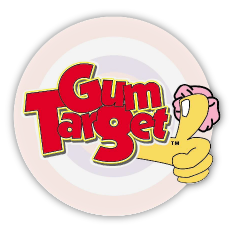Unlike other forms of waste that can disintegrate over time, gum is made from synthetic materials that resist natural degradation. When gum is carelessly discarded onto sidewalks and streets, it becomes a permanent fixture.
Municipalities worldwide are grappling with this issue, and the financial burden is significant. Cleaning up gum requires specialized equipment and intense labor. To remove gum from the pavement, high-pressure hoses, steam, or even freezing techniques are often employed, all of which require public funds.
Most gum brands use synthetic rubber as their base, which is a form of plastic. This means gum litter contributes to plastic pollution, harms wildlife, and can be difficult to manage in waste disposal processes.
The public needs to be made more aware of the consequences of their discarded gum, cities must provide adequate disposal means, and the gum industry should reconsider the materials used in their products.
The Introduction of Fines
The introduction of fines as a deterrent owes its rationale to a straightforward principle of behavior modification: when an action carries a negative consequence, people are likely to think twice before engaging in such behavior. By making the act of discarding gum onto the street a monetary liability, governments aim to instill a heightened sense of personal responsibility and environmental consciousness among the public.
Fine structures can vary widely from locality to locality. In some cities, fines are relatively modest, while in others they can be significantly steep. The actual amounts are usually set at levels thought to be sufficient enough to dissuade the undesired behavior without imposing excessive hardship on the offender.
For a fine to be effective, the act of littering must be witnessed by a law enforcement officer or a designated official, which presents logistical difficulties. Due to this requirement, many instances of gum littering go unpunished, undermining the potential effectiveness of fines as a preventative measure. This lack of consistent enforcement can result in the public perceiving such penalties as unlikely and thus failing to serve as a meaningful deterrent.
There’s also the aspect of administrative procedures and the resources necessary to enforce these fines properly. Local governments must balance the costs of enforcement with the expected outcomes, such as cleaner streets and less spent on clean-up efforts.
The introduction of fines for gum litter has had some measure of success when consistently applied. It has led to a noticeable reduction in gum litter, indicating that when adequately managed, legal penalties can play a role in addressing this form of environmental blight.
Understanding the Psychology Behind Littering
Littering can be seen as a decision-making process where an individual weighs the costs and benefits of their actions. If the perceived cost of finding a bin or carrying litter until one is found outweighs the perceived benefit of disposing of waste properly, littering may occur.
Some people may not fully appreciate the environmental impact of their discarded gum or may not equate the small size of gum with significant pollution. This suggests that education could play a key role in changing such behaviors. Highlighting the negative effects of littering on the environment, wildlife, and community aesthetics could shift perceptions and encourage responsible disposal practices.
People are more likely to litter in an environment where litter is already present, implying that it is socially acceptable. Clean environments encourage individuals to maintain that standard. Creating and reinforcing positive social norms around waste disposal can significantly reduce littering behaviors.
When waste bins are not readily available or easily accessible, even individuals with strong environmental attitudes may resort to littering. Improving the infrastructure for waste disposal can encourage proper waste disposal and decrease littering incidents.
Habits are powerful drivers of behavior, and if people are accustomed to disposing of gum carelessly, they might continue to do so without conscious thought. Changing such ingrained habits requires persistent and targeted interventions that gradually build new, more sustainable behaviors.
Best Practices from Around the Globe
 In the United Kingdom, some local councils have experimented with creative solutions like ‘gum targets’, special boards where people can stick their used gum. These are often placed next to traditional waste bins and serve as a responsible alternative to spitting gum onto the street. This method transforms the act of gum disposal into a positive action, rather than one to be penalized.
In the United Kingdom, some local councils have experimented with creative solutions like ‘gum targets’, special boards where people can stick their used gum. These are often placed next to traditional waste bins and serve as a responsible alternative to spitting gum onto the street. This method transforms the act of gum disposal into a positive action, rather than one to be penalized.
In Hong Kong, public education campaigns remind citizens of the environmental and aesthetic consequences of litter, including gum. By instilling a sense of civic pride and responsibility, these campaigns encourage personal action to keep streets clean, which has shown to be effective when paired with accessible disposal options.
Across Europe, various cities have invested in specialized cleaning equipment that can remove gum from pavements without the use of chemicals. These environmentally friendly technologies demonstrate a commitment to urban cleanliness and sustainability that can inspire community behavior.
Some regions have pursued partnerships with gum manufacturers to address the issue collaboratively. Through these partnerships, companies contribute to the costs of cleaning or engage in awareness-raising activities about proper gum disposal, acknowledging their role in the lifecycle of their products.
A few municipalities have approached the problem through design, installing custom-designed bins specifically for gum in high-traffic areas.
Barcelona implemented a city-wide campaign that combined public education, increased fines for littering, and the installation of new disposal infrastructures. The campaign used humor and local art to engage the public, leading to a reported decrease in gum litter.
Gum litter fines cannot stand alone as the ultimate solution. An effective strategy is likely to involve a multi-faceted approach that combines fines with education, infrastructural improvements, and product innovation.



